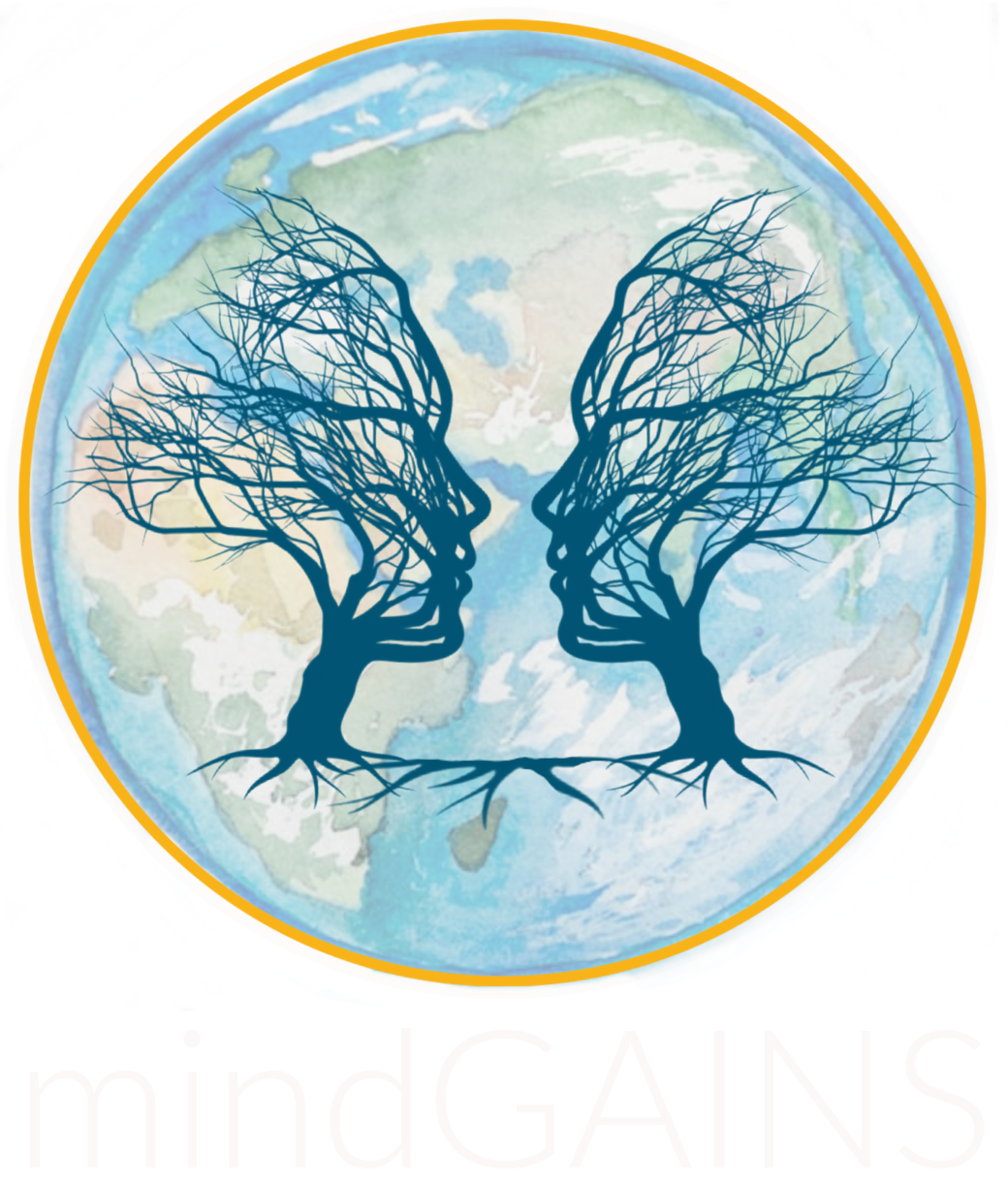By Caitriona Nic Ghiollaphadraig
“Dance is the hidden language of the soul of the body……
The body says what words cannot….
Dance is a song of the body. Either of joy or pain.
Think of the magic of that foot, comparatively small, upon which your whole weight rests. It is a miracle, and the dance is a celebration of that miracle.
The body is shaped, disciplined, honoured, and in time, trusted.
Dancing is just discovery, discovery, discovery — what it all means…”
Martha Graham
My Journey to Embodied Presence
I have been teaching two mindful movement practices – Gabrielle Roth’s 5 RhythmsÒ and Open Floor – for the past 27 years.
I was introduced to the 5 Rhythms in the early 1990s when I was a trainer in community work in Ireland. The project I was involved with received large European funding to design and implement a training for facilitators in community development. As a way to add creativity to the course which contained a high degree of theoretical input, I was asked to find a way to add mindful movement into the curriculum.
With a big dollop of challenge and youthful exuberance I began a 3-year project of introducing 3 different training groups to the 5 Rhythms mindful movement practice and translated all the theory of community and group development into an embodied experience for the students.
After some initial resistance – for example one participant put it to me “I don’t do movement”, the depth and creativity of the 5 Rhythms became obvious. Participants began to sense into what the theory felt like in their bodies, how it moved them, shaped them, and supported them to understand themselves and others in a radically new and embodied manner.
It became so successful that many wanted to deepen their practice of the 5 Rhythms without all the social and political theory attached. That set me on a path I could never have imagined.
I participated in more and more 5 Rhythms trainings with Gabrielle Roth – the founder. This took me on many visits to the USA. I also began to offer classes and workshops around the island of Ireland. Finally, I gave up the “day job” and took to teaching the 5 Rhythms on a full-time basis.
The practice sparked a lot of curiosity as there was nothing else quite like it at the time. I originally called it the 5 Rhythms dance practice but soon changed it to a mindful movement practice as dance was associated with ballroom, traditional Irish or choreographed dance.
The practice was about tuning into one’s own body and moving from the inside out, about participants learning to listen to their own inner facilitator. There is a form to guide the practice in order to bring awareness to one’s movements whether by oneself or in company of others.
I began to use the words “embodied movement” more and more as the depth and scope of the work grew along with my skills and confidence.
I was seeing both personally and in the participants that bringing consciousness to our movements was often accompanied by a critical voice of trying to get it right, feeling self-conscious, or inhibited. This meant most of my initial work was about creating safe places for participants to explore all these issues through the movement. To bring embodied kindness to all the voices, to recognise them, to give physical expression to them, and hopefully to befriend them. Humour was and still is, a vital ingredient in the workshops as I invited participants to “play” with various aspects of themselves.
We began to view the 5 Rhythms as the language of physicality. As we practiced moving towards or away from our thoughts, emotions and people, we became more and more fluent in the language of embodiment. As we practiced grounding and centring, participants became more courageous in allowing more and more of their inner life to be revealed through the embodiment practice.
I continued my own self-development as a teacher, training in group work/processing; sensorimotor trauma and developmental training; Mindful self-compassion and the Polyvagal theory.
Through all this I became increasingly aware of the work of Daniel Siegel. This led me down the road of neuroscience. I studied online with him and discovered the work of Richard Davidson, Stephen Porges, Louis Cozolino, Linda Graham, Rick Hanson, Kelly McGonigal to name a few.
I began to notice that most of the research into mindful practices was through sitting meditation. Yet what I was witnessing in my workshops led me to hypothesize that as people changed their movement practice, they were changing their brains.
Learning from an accident
This insight coincided with me having a serious bicycle accident which resulted in a brain injury that left me with no sensation and little movement in my left leg. I was and am still fascinated that as I was embarking on my theoretical study of the brain, I was being offered an embodied experience of a brain injury!
I found my recovery period to be enriched by my study. My embodiment practice enriched the study as I was challenged to change so many movements, I had taken for granted. At the same time, I was witnessing the effects of my thinking on my recovery. I recognised how my mind and body had a choice to work against each other or work together to develop a new relationship going forward. Slowly but surely, I set out on the road of recovery and discovery. It led me to decide to add solid information of the workings of the brain into all my movement workshops/classes. I integrated neuroscience and movement into a practice I now call Embodied Presence/Embodied Brain.
It has truly transformed my work and taken the movement practices to a new more embodied level.
Movement is life and life is movement.
Movement is life and life is movement. Movement is the language of the brain. Most experts in health-related disciplines agree that movement is central to our heath and continued wellbeing. That is movement with mindful attention. When we bring mindful attention to our movement,-this can be movement of our physical bodies, feet, hips, heads, hands; it can be thoughts moving across our minds or it can be the movement of feelings in and out of our hearts,- research has shown that the brain starts growing new neural connections, creating new pathways and possibilities for change.
If our movements are done automatically or mindlessly, this does not provide our brain with new information. On the contrary it tends to deepen already existing brain patterns which can contribute to deep-seated habits or a type of sameness to our everyday life and a loss of flexibility and fluidity in our bodies and minds.
Movements linked with mindful attention to our sensations, feelings and actions serve as rich sources of information to the brain. By paying mindful attention to our movements weariness can turn to vitality, curiosity, and interest; rigid shoulders have possibilities to loosen, feet can become flexible and grounded and locked up emotions are given space for expression.
Turn off the Automatic Pilot
When we operate on automatic pilot, falling into habits and routines in the ways we move, think, and feel, we not only feel less alive, we also develop chronic joint pains and muscular strain; stuck thinking and a certain flatness or sameness in our emotional and physical lives. Routines can turn into ruts, we become predictable. Inertia becomes a way of being and we may find ourselves continually resisting any suggestions that might help change how we think, feel or act. Living too much out of habit, routines and sameness can strip us of our curiosity, vitality, and new experiences
Years of maintaining similar routines and movements that are repeated over and over in the same mindless ways, can become restrictive. Pain and physical discomfort affect our emotional and intellectual lives, limiting our responses to the world around us. This can all contribute to losing the zest for life.
Yet we do not need to be trapped by repetitious routines and painful limiting beliefs. When we bring mindful attention and awareness to our movements, our brains are able to use this new information to lay down new and life-giving pathways to health. With mindful attention and awareness, different movements are introduced and discomfort begins to disappear and is replaced with a sense of well-being, energy, and increased zest for life.
I notice that many people “speak” the language of embodiment and think about embodiment. Embodied Presence/Embodied Brain practice allows us to actually experience it, sense it, allowing it to shape us, reshape us and move us in ways that fully engage the body and the brain in an embodied dance.
It allows us to be curious about our everyday movements as we go about our daily living. It is not confined to a particular time. We live in bodies and embodied presence allows us to feel at home in our own body regardless of age, gender, sexual orientation, ability, race. It supports us to bring kindness and patience to the mind/body dance. To notice with warmth our connections to self and other. And to keep coming home day after day, moment after moment to our own body.
“If you don’t do your dance, Who will?” Gabrielle Roth

